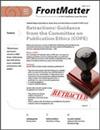基于亥姆霍兹谐振腔的超材料的宽带低频降噪
IF 0.4
4区 工程技术
Q4 ACOUSTICS
引用次数: 2
摘要
实现低频宽带噪声衰减仍然是一个重大挑战。亥姆霍兹谐振器提供了良好的低频噪声衰减,但仅在窄频带有效;在这些频率下所需的空腔体积也更大。本文提出了一种新型宽带声学超材料(AMM)吸收体,它使用聚氨酯(PU)泡沫嵌入可调谐到不同频率的小尺寸谐振器。AMM设计分三个阶段实现:(1)建立基于转移矩阵的颈部侵入谐振器一维模型;(2)利用该模型开发了一种新的带宽方法,选择合适的谐振器调谐到不同的频率;(3)在PU泡沫中构建嵌入谐振器阵列的单元胞超材料。一个调谐到415赫兹的小尺寸谐振器被修改,通过改变颈部的侵入长度,以达到210到415赫兹的固有频率。利用带展宽方法,构建了1单元胞超材料;在声阻抗管中进行了测试,证明了其有效性。所构建的单胞超材料的宽带衰减特性与预测结果吻合较好。为了进一步证明这一想法的有效性,使用4个周期单元格形成了一种超材料,并在双室混响室中进行了测试。在低频下,由于谐振器的加入,传输损耗得到了显著改善。本文章由计算机程序翻译,如有差异,请以英文原文为准。
Broadband low-frequency noise reduction using Helmholtz resonator-based metamaterial
Achieving broadband noise attenuation at low frequencies is still a significant challenge. Helmholtz resonators offer good low-frequency noise attenuation but are effective only over a narrow band; the cavity volume required at these frequencies is also larger. This article proposes
a new broadband acoustic metamaterial (AMM) absorber, which uses polyurethane (PU) foam embedded with small-size resonators tuned to different frequencies. The AMM design is achieved in three phases: (1) develop a transfer-matrix-based one-dimensionalmodel for a resonator with intruded neck;
(2) use this model to develop a novel band broadeningmethod, to select appropriate resonators tuned to different frequencies; and (3) construct a unit cell metamaterial embedded with an array of resonators into PU foam. A small-size resonator tuned to 415 Hz is modified, by varying the intrusion
lengths of the neck, to achieve natural frequencies ranging from 210 to 415 Hz. Using the band broadening methodology, 1 unit cell metamaterial is constructed; its effectiveness is demonstrated by testing in an acoustic impedance tube. The broadband attenuation characteristics of the constructed
unit cell metamaterial are shown to match well with the predicted results. To demonstrate further the effectiveness of the idea, a metamaterial is formed using 4 periodic unit cells and is tested in a twin room reverberation chamber. The transmission loss is shown to improve significantly,
at low frequencies, due to the inclusion of the resonators.
求助全文
通过发布文献求助,成功后即可免费获取论文全文。
去求助
来源期刊

Noise Control Engineering Journal
工程技术-工程:综合
CiteScore
0.90
自引率
25.00%
发文量
37
审稿时长
3 months
期刊介绍:
NCEJ is the pre-eminent academic journal of noise control. It is the International Journal of the Institute of Noise Control Engineering of the USA. It is also produced with the participation and assistance of the Korean Society of Noise and Vibration Engineering (KSNVE).
NCEJ reaches noise control professionals around the world, covering over 50 national noise control societies and institutes.
INCE encourages you to submit your next paper to NCEJ. Choosing NCEJ:
Provides the opportunity to reach a global audience of NCE professionals, academics, and students;
Enhances the prestige of your work;
Validates your work by formal peer review.
 求助内容:
求助内容: 应助结果提醒方式:
应助结果提醒方式:


